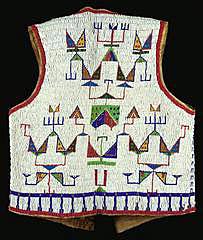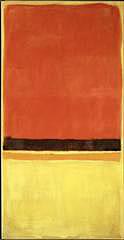 |
 |
 |
 |
 |
This color wheel shows the primary colors, secondary colors, and the tertiary colors. It also shows the relationships
between complementary colors across from each other on the color wheel, such as blue and orange; and analogous (similar or related)
colors next to each other on the color wheel such as yellow, green and blue. Black and white may be thought of as colors but, in fact,
they are not. White light is the presence of all color - black is the absence of reflected light and therefore the absence of color. |
|
 |
 |
 |
 |
 |
|
 |
 |
 |
 |
 |
The primary colors, red, yellow and blue, are the main colors used in this painting. |
 |
Nicolas Poussin
The Death of Germanicus
1627
Oil on canvas
The Minneapolis Institute of Arts
The William Hood Dunwoody Fund

|
|
 |
 |
 |
 |
 |
|
 |
 |
 |
 |
 |
Two primary colors can be mixed to create a secondary color: orange (from red and yellow), green (from yellow and
blue), or violet (from blue and red).
In this work of art, the artist has used the three primary colors, red, yellow, and blue; and a secondary color,
green. |
 |
Lakota
Beaded Vest
19th century
Leather, glass beads
The Minneapolis Institute of Arts
Bequest of Dorothy Record Bauman

|
|
 |
 |
 |
 |
 |
|
 |
 |
 |
 |
 |
The combination of a primary color with a secondary color creates another color called a tertiary color. In this
painting the artist used the tertiary color red-orange, along with the primary color yellow. Tertiary colors are also known as
intermediate colors. |
 |
Mark Rothko
untitled
1953
oil on canvas
Walker Art Center
Gift of the Mark Rothko Foundation, Inc.

|
|
 |
 |
 |
 |
 |
|
 |
 |
 |
 |
 |
Colors next to one another on the color wheel are called analogous (it means "related"). Analogous colors share a
common color and usually appear to be in harmony.
The majority of colors in this painting are blue, green, and yellow. Green is made from a mixture of blue and yellow
and is therefore analogous to blue and also to yellow. |
 |
Ed Paschke
Painted Lady
1995
oil on linen
Walker Art Center
Anonymous gift

|
|
 |
 |
 |
 |
 |
|
 |
 |
 |
 |
 |
Complementary colors are directly across from one another on the color wheel and share no common colors. Blue and
orange are examples of complementary colors. Various shades of blue and orange have been used throughout this embroidery.

|
 |
Artist Unknown
Dream of the Red Chamber
Ching dynasty
silk, embroidery
The Minneapolis Institute of Arts
Gift of Sandra K. and Peter M. Butler

|
|
 |
 |
 |
 |
 |









